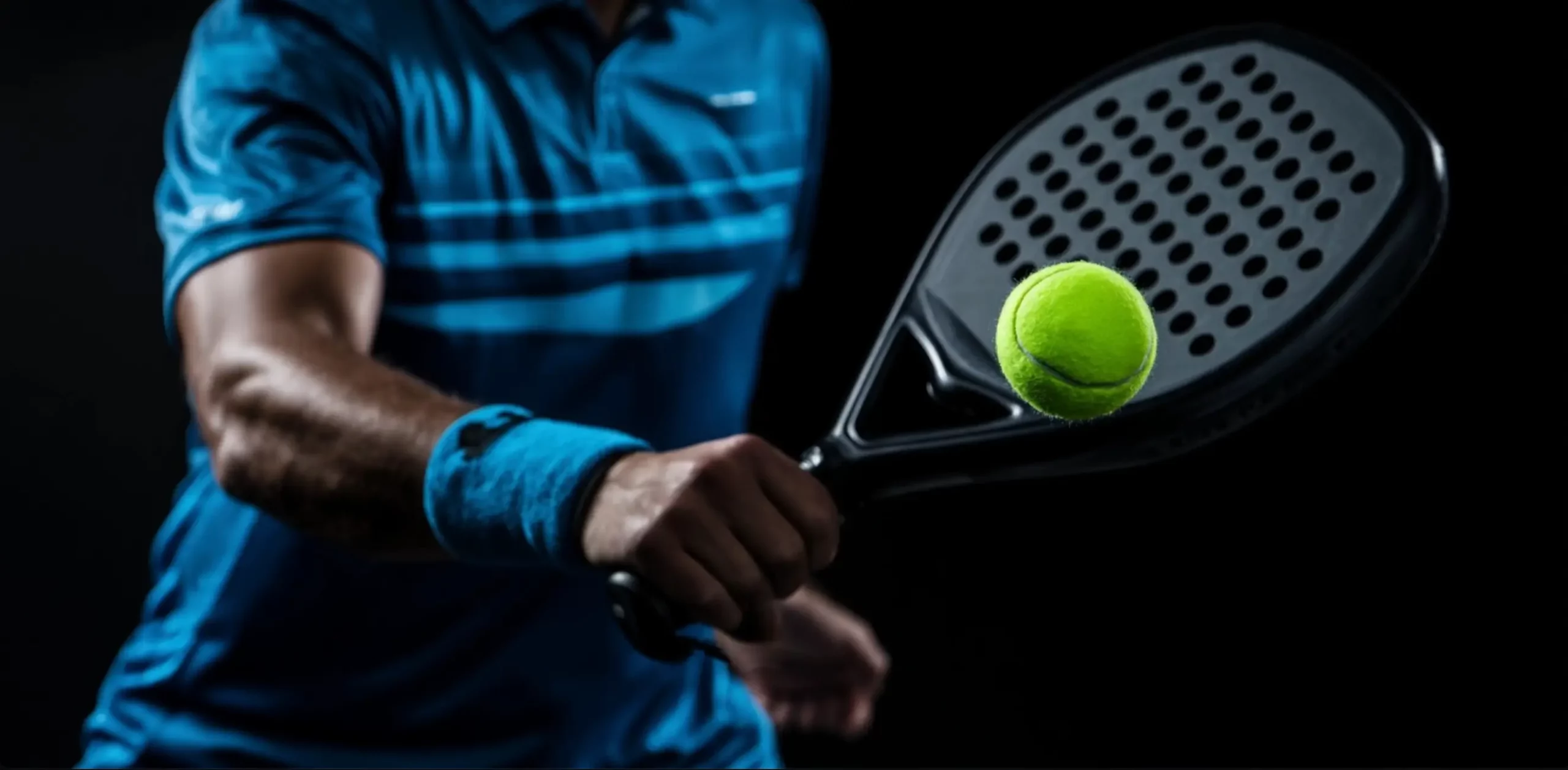Packed with power, personality, and a dash of mystery. While it might not have the household recognition of tennis or football, yet this uniquely thrilling racquet sport is winning hearts faster than a cross-court volley. If you’ve ever stepped onto a Padel court or simply watched a match in passing, you already know it’s a spectacle. But did you know Padel is as deep as it is fun?
Let’s lift the curtain and dive into 10 surprising, smile-inducing, and sometimes jaw-dropping facts about Padel that even the most seasoned sports enthusiasts often overlook.
The Origin of Padel Might Surprise You
You’d be forgiven for thinking Padel came from Spain , after all, it’s where the sport found its strongest roots. But Padel’s true birthplace? Mexico.
Back in 1969, businessman Enrique Corcuera crafted the very first Padel court in his Acapulco backyard. He combined elements from squash and tennis, enclosing the court with walls to keep the ball in play. It was more of an invention than coincidence, he wanted a game his friends and family could enjoy with less intensity than tennis but more interaction than squash.
Enter Spanish Prince Alfonso de Hohenlohe, who visited Enrique, fell in love with the game, and brought it back to Marbella, Spain. The rest, as they say, is history. Spain would soon become the sport’s epicenter, with millions now picking up the paddle.
Padel is One of the Fastest Growing Sports Worldwide
You can’t stop a tidal wave once it’s moving and that’s exactly what’s happening with Padel. With over 25 million players across 90 countries, the sport’s footprint is expanding faster than most experts predicted. According to the International Padel Federation, interest in the game is doubling every year in parts of Europe.
Sweden, Italy, and the UK have become new strongholds, while places like Egypt, the UAE, and Japan are constructing rooftop courts, mall arenas, and luxury Padel clubs. It’s no longer just a European phenomenon, it’s a global revolution.
The Racket Has No Strings For a Reason
If you’re imagining a mini tennis racket, think again. A Padel racket is unmistakably unique. It has no strings, is perforated with holes, and is crafted from materials like carbon fiber, fiberglass, and EVA foam.
Why the odd look? Function. The racket’s solid surface reduces wind resistance and offers more precision when slicing or spinning the ball. That unmistakable “pop” sound when hitting? A blend of physics and finesse.
So yes, while tennis relies on tension and strings, Padel banks on tactile feel and smart design.
The Ball Looks Like a Tennis Ball But Isn’t One
At first glance, a Padel ball seems indistinguishable from a tennis ball. Same size, same bounce, same fuzzy yellow look. But here’s the kicker: Padel balls are slightly depressurized, making them slower and less bouncy.
This makes a world of difference on the smaller Padel court. It gives players more time to react, use the walls, and craft longer rallies that are far more strategic than brute force affairs.
Think of it as tennis’s clever cousin; more brain, less brawn.
You Can Use the Glass Walls Strategically
Unlike most racquet sports, Padel thrives on wall play. Much like squash, players can use the back and side walls to bounce the ball back into play. But in Padel, it’s not just legal, it’s strategic gold.
Mastering the walls means controlling angles, reading bounces, and anticipating the next move like a chess master in sneakers. It’s this element that turns Padel into a cerebral workout, as much as a physical one.
You Don’t Serve Overhand, Ever
Gone are the booming serves and aces of tennis. In Padel, the serve must be underhand, and it has to bounce once before you strike it below the waist. No exceptions.
This small rule flip changes everything. It puts emphasis on rallies, tactics, and shot selection, not just raw power. It also means players of different ages and skill levels can compete without one-sided serves dominating play.
Top Tennis Pros Are Padel Addicts
Don’t take our word for it. Just ask Rafael Nadal, Andy Murray, or Novak Djokovic. These tennis titans have all voiced their admiration for Padel. In fact, Nadal has invested in Padel academies across Spain.
Why the switch? For many pros and retired players, Padel is a lower-impact way to stay sharp, social, and competitive. Even global celebrities like David Beckham and Cristiano Ronaldo have been spotted rallying on courts.
Clearly, this sport has A-list appeal.
Padel Isn’t an Olympic Sport, Yet
Despite its popularity, It hasn’t cracked into the Olympic Games but that might be about to change.
The International Padel Federation has been actively lobbying for inclusion, and with its growing global presence and fan base, the sport seems primed for a breakout moment. Could Paris 2028 or Los Angeles 2032 be the launching pad? Only time will tell.
It’s the Most Social Racket Sport on Earth
Unlike tennis, which is often singles-based, Padel is always played in doubles. That makes it one of the most inclusive and social sports around. Whether it’s a casual weekend match or a competitive league night, there’s always a partner, always banter, and always a reason to laugh.
Because the court is smaller, players are never far from each other, which means communication and camaraderie are built into every point.
Playing Padel is an Excellent Full-Body Workout
Padel might look like fun and games and it is, but don’t underestimate its fitness potential.
A one-hour session can burn 500-700 calories, improve reflexes, coordination, and cardiovascular endurance, all while keeping you mentally sharp. The short bursts, lateral movement, and constant engagement mean your entire body gets a workout and your mind gets a refresh.
Padel
In the wide world of sports, few games combine accessibility, social connection, strategy, and fitness like Padel. It’s a sport born in a backyard, embraced by royalty, and now exploding on courts across the planet. Whether you’re a casual player, a fitness fanatic, or a competitive spirit, Padel offers something unique, a delightful blend of fun, sweat, and strategy.
Frequently Asked Questions
Padel was invented in 1969 in Acapulco, Mexico, by Enrique Corcuera, not in Spain as many believe.
Padel rackets are stringless and made of carbon fiber or fiberglass with perforations, providing control and reducing resistance.
No, it’s growing rapidly worldwide, including in the Middle East, Asia, and the Americas.
Absolutely! Its rules are simple, and the court’s size makes it accessible for all ages and fitness levels.
Though not yet an Olympic sport, there’s ongoing lobbying for its inclusion, and its global growth supports the case.
Conclusion
Padel isn’t just a trend, it’s a tidal wave of joy, health, and strategy that’s sweeping across the world. Whether you’re picking up a racket for the first time or considering switching from tennis, there’s never been a better time to step onto a Padel court. With every volley, bounce off the wall, and shared laugh between teammates, you’ll discover what makes this sport so irresistible.
So, next time someone says, “What’s Padel?” you’ll not only know the answer but might just convince them to grab a paddle and play.

